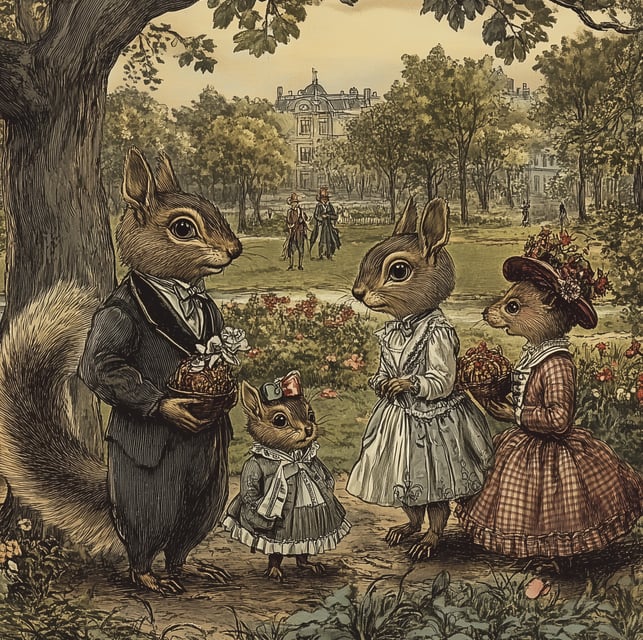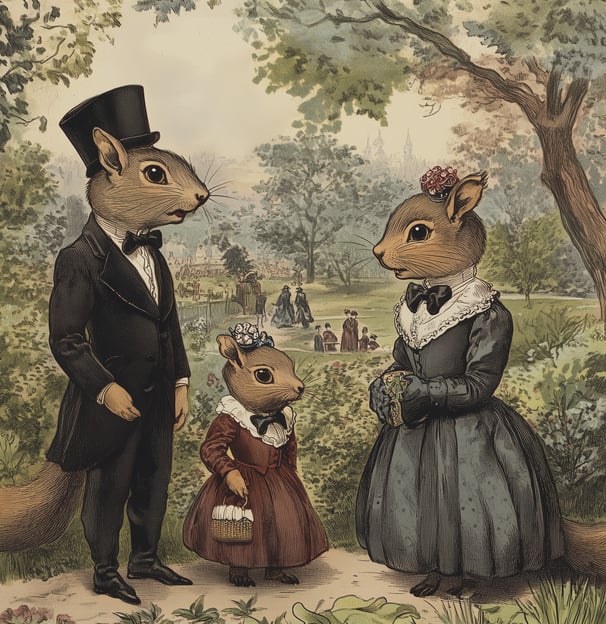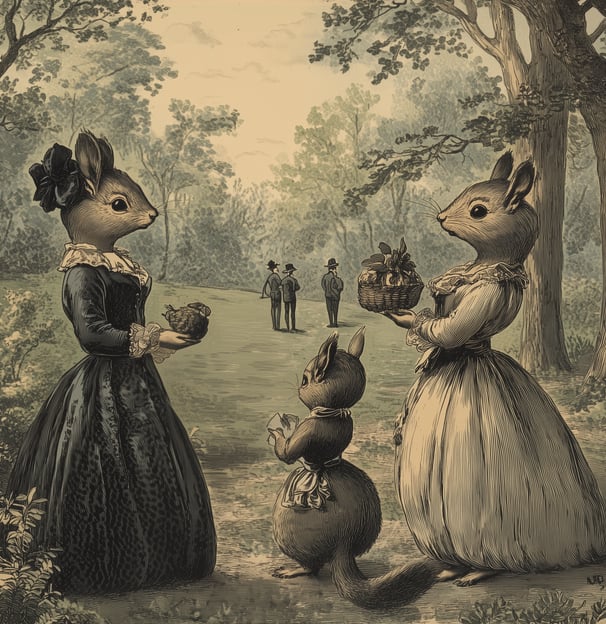The Origins of Squirrels in Urban Parks: A 19th-Century Transformation
Squirrels are a familiar sight in urban parks across the United States, but their presence in city landscapes is not as natural as it may seem. Unlike other urban wildlife that has adapted to city life over time, squirrels were intentionally introduced to public parks in the 19th century as part of a broader effort to bring nature into growing urban centers. Their story is intertwined with urban planning, shifting environmental perspectives, and the evolving relationship between humans and wildlife. Explore squirrels' natural habitat, introduce them to urban environments, and learn about their role in modern cities.
STATE & LOCAL GOVERNMENTCOMMUNITYHISTORY
Dr. Shawn Granger
3/5/20253 min read


The Natural Habitat of Squirrels
Squirrels, particularly the eastern gray squirrel (Sciurus carolinensis), are native to North America's vast deciduous forests. Their natural habitat consists of dense woodlands filled with towering oak, hickory, and beech trees, providing shelter, food, and nesting sites. As Thorington and Ferrell (2006) explain, “Squirrels are highly adapted to arboreal life, relying on trees for food sources such as acorns, nuts, and fruits” (p. 23). These small mammals play a crucial ecological role in forest regeneration, as they bury nuts and seeds, some of which remain uneaten and eventually sprout into new trees (Steele & Koprowski, 2001).
The Introduction of Squirrels to Urban Parks
The presence of squirrels in city parks can be traced back to the mid-19th century, when they were deliberately introduced as part of an effort to create a more natural and picturesque environment. One of the earliest recorded introductions occurred in Philadelphia’s Franklin Square in 1847, followed by releases in Boston and New York City, particularly in Central Park during the 1870s (Benson, 2013). These efforts were influenced by the American Romantic movement, which emphasized the importance of nature in urban settings.
City planners and landscape architects sought to design parks that offered urban dwellers a refuge from the rapidly industrializing world. As historian Etienne Benson (2013) notes, “Parks were designed as places of refuge from industrialization, and the presence of wildlife, particularly squirrels, helped reinforce that vision” (p. 696). The introduction of squirrels reflected a growing conservation ethic of the time, which encouraged the integration of nature into city life.
The Role of Squirrels in Urban Environments
Beyond their aesthetic appeal, squirrels have established themselves as key players in urban ecosystems. Their seed-burying habits contribute to tree growth and biodiversity in city parks, inadvertently aiding in urban reforestation (Steele & Koprowski, 2001). “Squirrels are inadvertent forest managers, helping to maintain biodiversity in city parks through their foraging behavior,” explains urban ecologist John Koprowski (2005, p. 38).
Additionally, squirrels occupy an essential position in the urban food chain. They consume a variety of foods, including nuts, fruits, fungi, and small insects, helping regulate insect populations. Simultaneously, they serve as prey for urban predators such as hawks, owls, foxes, and even domesticated cats (Magle et al., 2012). This balance highlights their importance in sustaining urban biodiversity.
Squirrels and Human Interaction
Over the decades, squirrels have become deeply integrated into urban culture. Their presence in parks has led to frequent interactions with humans, often through feeding. While some people enjoy feeding squirrels, others see them as a nuisance due to their tendency to raid bird feeders and dig up gardens. Despite this, they remain one of the most visible and accessible forms of urban wildlife. As Maguire (2011) states, “Squirrels provide an accessible way for people to engage with nature in an otherwise artificial environment” (p. 82).
Conclusion
The introduction of squirrels to urban parks in the 19th century was a deliberate act that reshaped the relationship between humans and urban wildlife. Today, squirrels thrive in cities, playing a role in both the ecological and cultural fabric of urban life. Their story serves as a reminder of how human intervention can influence wildlife distribution and urban ecosystems. As cities continue to expand, understanding the role of squirrels in urban environments will be crucial in promoting sustainable coexistence between humans and wildlife.
References
Benson, E. (2013). The urbanization of the eastern gray squirrel in the United States. The Journal of American History, 100(3), 691–710.
Koprowski, J. L. (2005). The role of tree squirrels in forest regeneration. Ecology and Evolution, 20(5), 34-41.
Magle, S. B., Hunt, V. M., Vernon, M., & Crooks, K. R. (2012). Urban wildlife research: Past, present, and future. Biological Conservation, 155, 23-32.
Maguire, L. (2011). Urban wildlife and human interaction: A study of squirrels in city parks. Urban Ecology Review, 8(2), 77–89.
Steele, M. A., & Koprowski, J. L. (2001). North American tree squirrels. Smithsonian Institution Press.
Thorington, R. W., & Ferrell, K. (2006). Squirrels: The animal answer guide. Johns Hopkins University Press.




